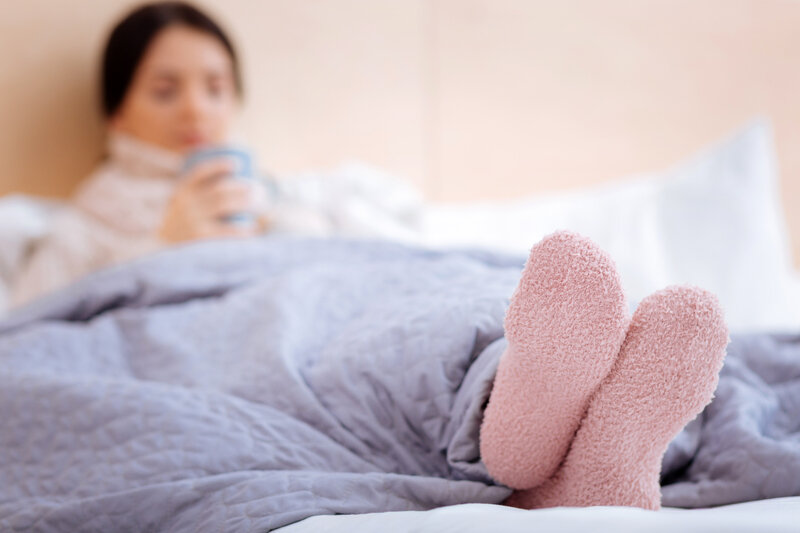Hypermobile Ehlers-Danlos Syndrome (hEDS) is a connective tissue disorder primarily characterized by joint hypermobility, chronic pain, and a range of other systemic symptoms. Though often underdiagnosed, hEDS can have a significant impact on a patient's quality of life. Naturopathic medicine offers a holistic approach to managing hEDS, focusing on treating the whole person and addressing underlying issues.
What is hEDS?
Ehlers-Danlos Syndromes (EDS) are a group of heritable connective tissue disorders affecting collagen, a key protein that provides structure and strength to various tissues in the body. Hypermobile Ehlers-Danlos Syndrome (hEDS) is the most common subtype, marked by joint hypermobility, musculoskeletal pain, and frequent dislocations or subluxations. In addition to joint-related symptoms, patients with hEDS may experience:
Gastrointestinal issues (e.g. irritable bowel syndrome – IBS)
Dysautonomia (e.g. postural orthostatic tachycardia syndrome – POTS)
Fatigue and sleep disturbances
Easy bruising and poor wound healing
Anxiety and mood disorders
The condition can vary widely in its severity, from mild joint hypermobility to disabling chronic pain and multi-systemic issues. Diagnosis of hEDS is primarily clinical, relying on a combination of patient history, physical examination, and established criteria.
Conventional Management of hEDS
Conventional treatment of hEDS often involves a multidisciplinary approach, including physical therapy, pain management, and medications to control symptoms. While these interventions can help manage some aspects of the condition, many patients seek additional support to address the chronic and systemic nature of hEDS. This is where naturopathic medicine can offer valuable adjunctive care.
Naturopathic Approach to hEDS
Naturopathic doctors (NDs) focus on treating the underlying causes of disease while emphasizing lifestyle changes, natural therapies, and patient education. For hEDS patients, a naturopathic approach includes:
Nutritional Support
An anti-inflammatory diet incorporating omega-3 fatty acids to help reduce systemic inflammation can be helpful in managing chronic pain associated with hEDS. Other essential nutrients to include are vitamin C (a key co-factor in collagen synthesis) and zinc (important for tissue repair and immune function).
Digestive Health
Irritable bowel syndrome (IBS) is a common symptom in patients with hEDS, utilizing probiotics to maintain a balanced gut microbiome, recommending a high fiber diet to support gut motility and identify and eliminating food sensitives can also be beneficial for patients with hEDS to reduce inflammation within the body and alleviate symptoms of IBS.
Movement
Exercise programs that focus on low-impact activities and emphasize gentle, controlled movements to support muscle recovery and alleviate pain would be ideal for patients with hEDS.
Nervous System Support
Using mind-body practices such as meditation, yoga and/or breathing exercises can support the autonomic regulation and reduce anxiety and pain perception in patients with hEDS. Adaptogenic herbs has also been shown to help modulate the body’s stress response.
Pain Management
Anti-inflammatory herbs such as ginger, turmeric or Boswellia can help reduce inflammation and pain. Acupuncture has also been beneficial for some patients who experience chronic pain from hEDS.
Sleep Optimization
Sleep disturbances can be common in patients with hEDS. Utilizing herbal supports and nutraceuticals such as passionflower and magnesium can help promote relaxation and improve quality of sleep in hEDS patients.
Hypermobile Ehlers-Danlos Syndrome is a complex condition that affects multiple body systems. While conventional management is crucial for stabilizing joints and managing acute symptoms, naturopathic medicine offers a comprehensive approach that addresses the underlying causes, supports overall health, and empowers patients with hEDS to take an active role in their care. Through nutritional support, digestive health optimization, nervous system regulation, pain management and sleep optimization, NDs can help patients with hEDS improve their quality of life and manage symptoms more effectively.
In health,
Dr. Sami Leung, ND
References:
Castori, M., Morlino, S., Pascolini, G., Blundo, C., & Grammatico, P. (2015). Gastrointestinal and nutritional issues in joint hypermobility syndrome/Ehlers-Danlos syndrome, hypermobility type. American journal of medical genetics. Part C, Seminars in medical genetics, 169C(1), 54–75. https://doi.org/10.1002/ajmg.c.31431
Chopra, P., Tinkle, B., Hamonet, C., Brock, I., Gompel, A., Bulbena, A., & Francomano, C. (2017). Pain management in the Ehlers-Danlos syndromes. American journal of medical genetics. Part C, Seminars in medical genetics, 175(1), 212–219. https://doi.org/10.1002/ajmg.c.31554
Demes, J. S., McNair, B., & Taylor, M. R. G. (2020). Use of complementary therapies for chronic pain management in patients with reported Ehlers-Danlos syndrome or hypermobility spectrum disorders. American journal of medical genetics. Part A, 182(11), 2611–2623. https://doi.org/10.1002/ajmg.a.61837
Do, T., Diamond, S., Green, C., & Warren, M. (2021). Nutritional Implications of Patients with Dysautonomia and Hypermobility Syndromes. Current nutrition reports, 10(4), 324–333. https://doi.org/10.1007/s13668-021-00373-1
Doyle, T. A., & Halverson, C. M. E. (2022). Use of complementary and alternative medicine by patients with hypermobile Ehlers-Danlos Syndrome: A qualitative study. Frontiers in medicine, 9, 1056438. https://doi.org/10.3389/fmed.2022.1056438
Guedry, S. E., Langley, B. O., Schaefer, K., & Hanes, D. A. (2024). Integrative medicine for hypermobility spectrum disorders (HSD) and Ehlers-Danlos syndromes (EDS): a feasibility study. Disability and rehabilitation, 1–14. Advance online publication. https://doi.org/10.1080/09638288.2024.2314713
Hakim, A. (2004). Hypermobile Ehlers-Danlos Syndrome. In M. P. Adam (Eds.) et. al., GeneReviews®. University of Washington, Seattle.
Heds Body System. The Ehlers Danlos Society. (2024, September 12). https://www.ehlers-danlos.com/heds/
Langevin, H. M., Churchill, D. L., Wu, J., Badger, G. J., Yandow, J. A., Fox, J. R., & Krag, M. H. (2002). Evidence of connective tissue involvement in acupuncture. FASEB journal : official publication of the Federation of American Societies for Experimental Biology, 16(8), 872–874. https://doi.org/10.1096/fj.01-0925fje
Mantle, D., Wilkins, R. M., & Preedy, V. (2005). A novel therapeutic strategy for Ehlers-Danlos syndrome based on nutritional supplements. Medical hypotheses, 64(2), 279–283. https://doi.org/10.1016/j.mehy.2004.07.023
Pullar, J. M., Carr, A. C., & Vissers, M. C. M. (2017). The Roles of Vitamin C in Skin Health. Nutrients, 9(8), 866. https://doi.org/10.3390/nu9080866
Topan, R., Pandya, S., Williams, S., Ruffle, J. K., Zarate-Lopez, N., Aziz, Q., & Fikree, A. (2024). Comprehensive Assessment of Nutrition and Dietary Influences in Hypermobile Ehlers-Danlos Syndrome-A Cross-Sectional Study. The American journal of gastroenterology, 119(4), 727–738. https://doi.org/10.14309/ajg.0000000000002586
Song, B., Yeh, P., Nguyen, D., Ikpeama, U., Epstein, M., & Harrell, J. (2020). Ehlers-Danlos Syndrome: An Analysis of the Current Treatment Options. Pain physician, 23(4), 429–438.




